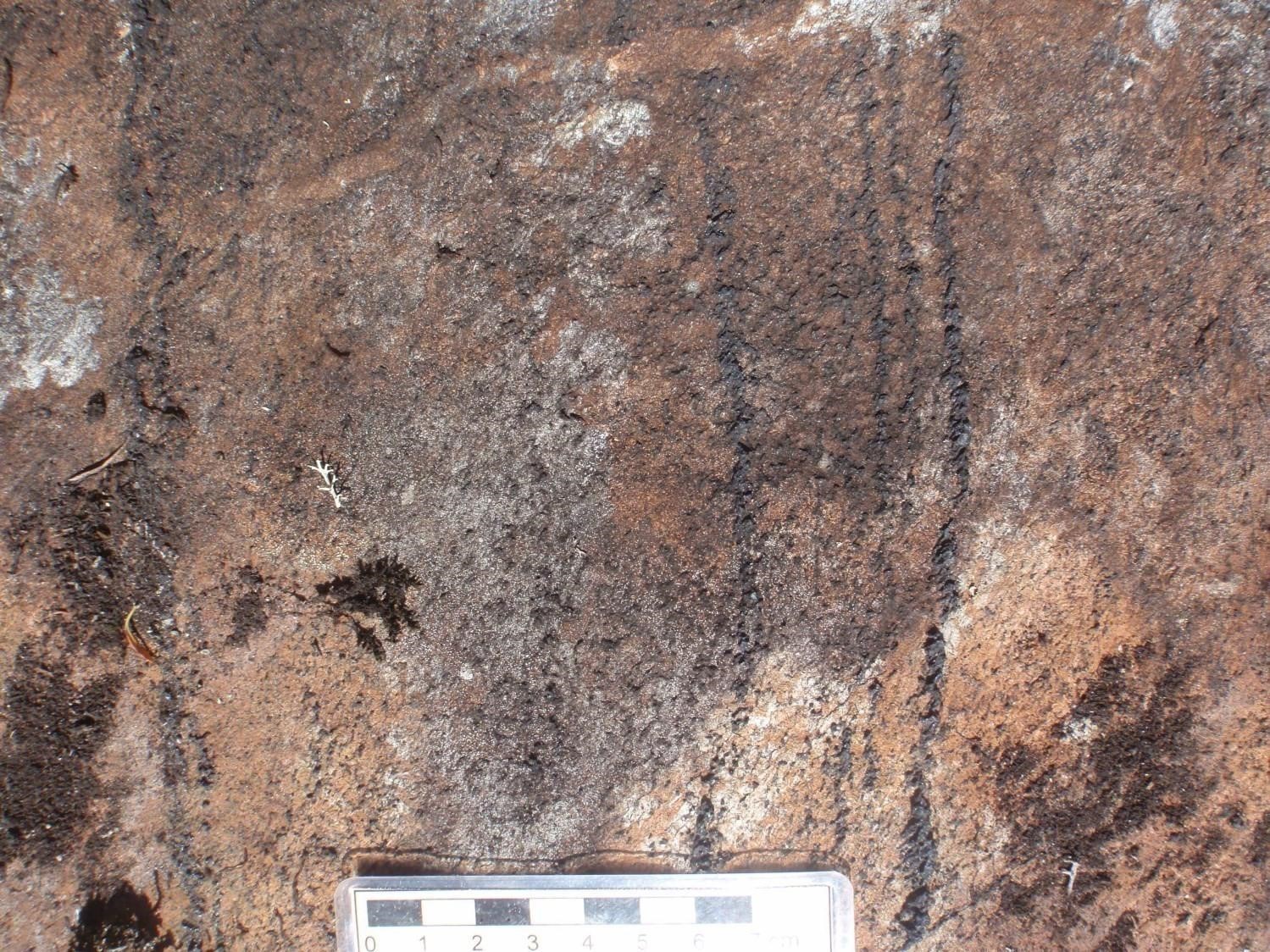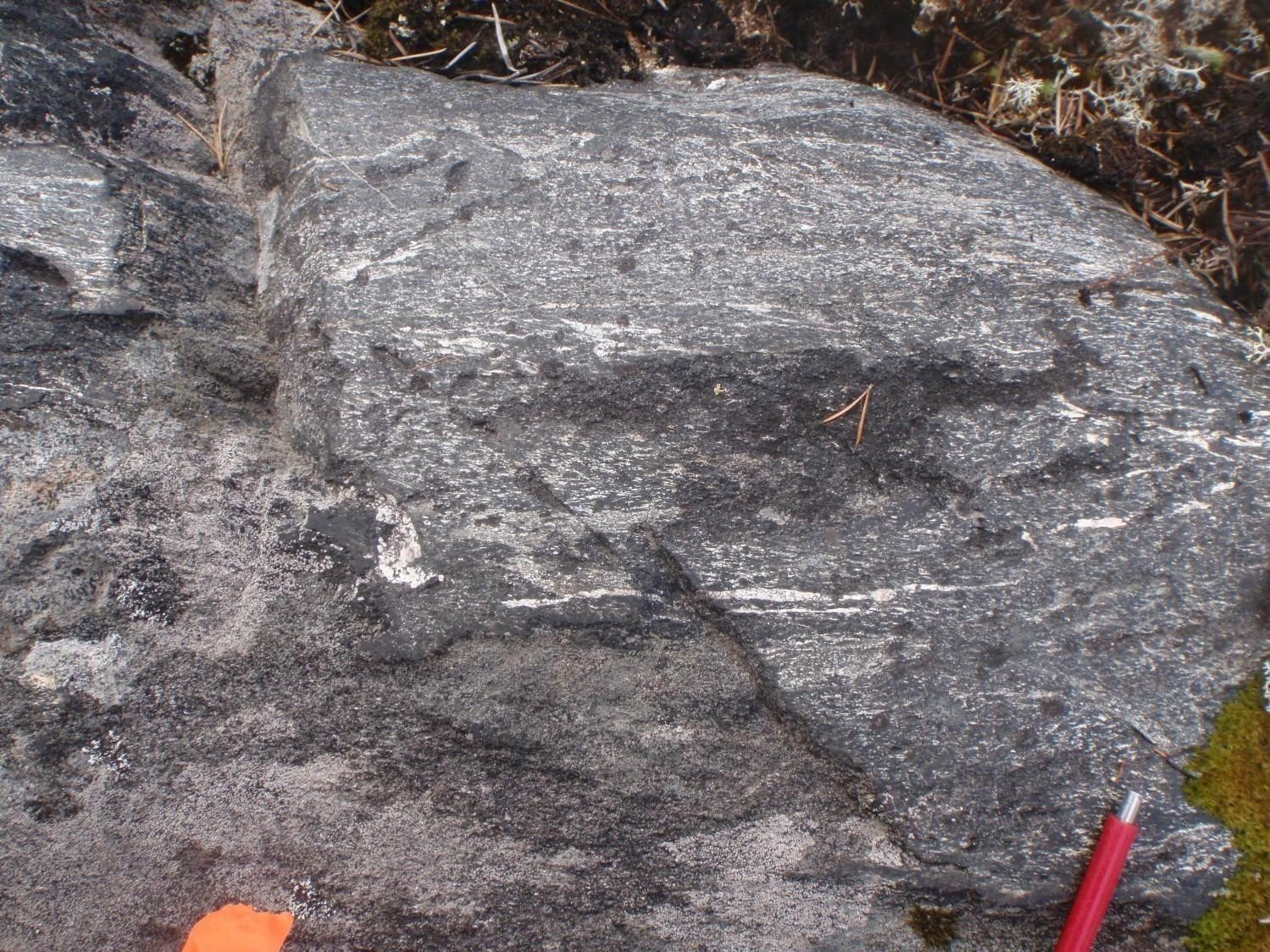| Author: | Bandyayera and Daoudene, 2018 |
| Age: | Neoarchean |
| Reference section: | None |
| Type area: | Areas south of Caumont Lake, southwest of the Champion Lake region (NTS sheet 32N09) |
| Geological province: | Superior Province |
| Geological subdivision: | Nemiscau Subprovince |
| Lithology: | Mafic and ultramafic rocks |
| Type: | Lithodemic |
| Rank: | Suite |
| Status: | Formal |
| Use: | Active |
- Caumont Mafic-Ultramafic Suite
Background
A series of mafic-ultramafic intrusions associated with volcano-sedimentary rocks was mapped in the Champion and des Montagnes lakes area by Valiquette (1975). The Caumont Mafic-Ultramafic Suite was created following the summer 2017 work in the Champion Lake region to consolidate and better describe these rocks (Bandyayera and Daoudene, 2018).
Description
The Caumont Mafic-Ultramafic Suite consists of a series of mafic-ultramafic intrusions, in places interstratified with volcano-sedimentary rocks of the Lac des Montagnes Group. The largest of these intrusions are located near Caumont Lake (sheet 32N09) and Levac Lake (sheet 32O12), including the Lac des Montagnes Ultramafic Intrusion. On geophysical maps, these intrusions are generally associated with positive magnetic anomalies. They form elongated, lenticular and conformable bodies within amphibolitized basalt of the Lac des Montagnes Group, suggesting that many of these intrusions represent synvolcanic sills. At first glance, the mafic and ultramafic rocks are massive and homogeneous. However, in places, these rocks are heavily deformed and sheared. Near regional shear zones, rocks are also mylonitized.
Ultramafic intrusions consist of peridotite and pyroxenite that are fine to medium grained, homogeneous, massive to foliated, granoblastic and typically magnetic. Rocks are also characterized by an orange-brown alteration patina and a dark green to black fresh surface. These rocks are composed of actinolite, tremolite, serpentine, talc, magnetite, clinopyroxene and orthopyroxene. Local accessory minerals include garnet, cummingtonite, calcite and epidote. Peridotite generally contains rounded crystals of serpentinized olivine. In places, thin horizons of peridotite contain up to 20% talc crystals in the form of rods arranged in rosettes, interpreted as olivine spinifex relics. The extent of these komatiitic lavas could not be determined. Cumulate textures are also observed in several places. The brownish surface of outcrops is covered by fractures arranged according to rhomboid patterns or forming polygonal joints. These negative relief fractures contain serpentine, talc, tremolite and magnetite. Magnetite and serpentine veins are regularly observed in peridotitic facies.
Mafic intrusions consist of gabbros, medium to coarse grained, subophitic to glomerorphyric, amphibolitized, foliated, greyish green to dark green in altered surface, and greenish black or dark grey in fresh exposure. Ferromagnesian minerals (amphibolitized pyroxene) range from 40 to 60%.
The normative composition of peridotite corresponds to harzburgite containing more than 30% MgO, that of pyroxenite to olivine websterite containing 9-27% MgO, and that of mafic rocks to norite and gabbronorite. All of these rocks are of tholeiitic affinity, showing flat chondrite normalized rare earth profiles subparallel to those of the amphibolitized basaltic host (unit nAmo1 of the Lac des Montagnes Group).
Thickness and Distribution
In the Champion Lake area (sheet 32N09), the Caumont Lake intrusion is 8 km long and 600 m wide. In the northeast extension of the Lac des Montagnes Group, the work of Valiquette (1975) exhibited another mafic-ultramafic intrusion (Levac Lake) 7.5 km long and over 200 m wide, located north of Voirdye Lake (sheet 32O12). Bandyayera and Caron-Côté (2019) also mapped about ten mafic-ultramafic intrusions, 500 m to 3 km long, in the southern NE corner of the Senay Lake area (sheet 32O11) and in the SW portion of the Du Glas Lake area (sheet 32O14).
Dating
None.
Stratigraphic Relationship(s)
The Caumont Mafic-Ultramafic Suite intrudes rocks of the Lac des Montagnes Group. Basalt enclaves are locally observed in the mafic-ultramafic sills.
Paleontology
Does not apply.




